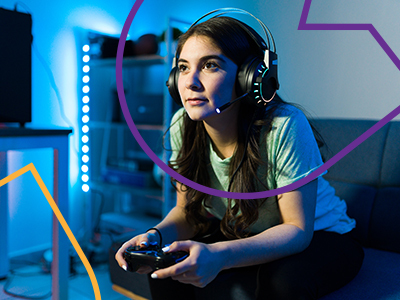By Stephan Williams, Product Lead
Connect on LinkedIn
When you sat down for your first day of chemistry lessons as a child, on the wall you probably saw a poster of a big chart. And at some point your teacher probably pointed to it and told the class “by the end of your time here you’ll know everything on that poster”. I challenge you now to try and remember how many elements there are on the periodic table of elements without looking it up.
Now, what if I told you that millions of kids have perfect recall of all of these next charts, and after ten years still know almost all of this data?
The secret? These are Pokemon types and their weaknesses.
This was posed by André Thomas, an associate professor at Texas A&M, in his lecture on Game-Based Learning in Education. In it he states that it’s not about the content itself, but how we present the information. Games are a medium, no different to books. So when we think about developing learning that can be interactive and engaging for all age groups, games are not only a valid medium but potentially the key to unlocking what the future of education could be.
What is interactive learning?
As our culture has matured beyond its digital infancy, we’ve seen how regardless of age or location, technology is the spark that lights the fuse of self-motivated learning. Thanks to social media and the evolution of devices, not only are we all now used to interacting with content that we see, it’s our expectation. This shift has paved the way for interactive learning, a method that actively involves learners in the educational process.
Interactive learning isn’t just about consuming information; it’s about engaging with it. Whether it’s through discussions, problem-solving exercises, case studies, or role-playing, learners are no longer mere spectators. They’re participants, diving deep into topics, questioning concepts, and applying their knowledge in real-time scenarios. This active involvement not only boosts understanding and retention but also cultivates essential skills like critical thinking, collaboration, and adaptability.
As the digital landscape continues to evolve, so too must our approach to education. Interactive learning, bolstered by concepts like gamification, offer a promising path forward, ensuring that learning remains a dynamic, engaging, and rewarding journey for all.
The rise of gamification
No industry has grown quite like video games over the last 20 years. In a world where human attention is the new currency, video games have quietly dominated the entertainment sector with a market size of $217bn, more than double that of the global film market. In the UK alone, 76% of adults play some form of online games.
So it is no surprise that when other sectors looked at how we successfully motivate our users to engage with our products, the term ‘Gamification’ became the hot new word on the street. So let’s break down what gamification is, and how we can adopt it as a mindset rather than a single task and change the way people engage with our learning.
What is gamification?
Gamification is a method of interactive learning that is applying principles and elements of game design to a non-gaming system or service. Within gamification there are key types of motivation to get people to engage with the target activity.
One type is Extrinsic motivation, where a user gains rewards and is focused on external gain beyond the activity itself. An example of this would be adding leaderboards, or having challenges that give rewards on completion. However, by itself extrinsic motivation suffers from having lower long term impact on motivating engagement.
A type of motivation that can lead to improved long term behavioural change is Intrinsic motivation. This is when the user is engaging in an activity because they get personal satisfaction from doing it. A key part of intrinsic motivation is motivating your users to engage in your content by helping people fulfil different psychological needs whilst engaging with your content.
These needs include but are not limited to:
- Autonomy: the desire to be in control of your own pace of engagement
- Mastery: the ability to become better at something that matters
- Purpose: the guarantee that what is being done is meaningful
- Competition: the drive to be better than others
Games are how we learn to learn
As children, play is the most important thing to us, so parents lean into this and use it as motivation to learn the basic ways in which we navigate this world. The gaming industry spends billions every year researching new methods for maximising engagement, and are right now creating products that will be more engaging to users than almost all other content created in the last century.
Not only can we learn from the same principles and innovations, but we can use the same philosophies in the products and content that we build for education. At a minimum, our users and learners will enjoy their learning experiences more. But ultimately, these principles can help us motivate long term behavioural change and make every learning experience more successful.
Connect on LinkedIn










